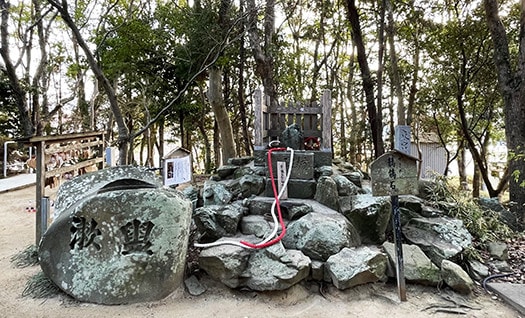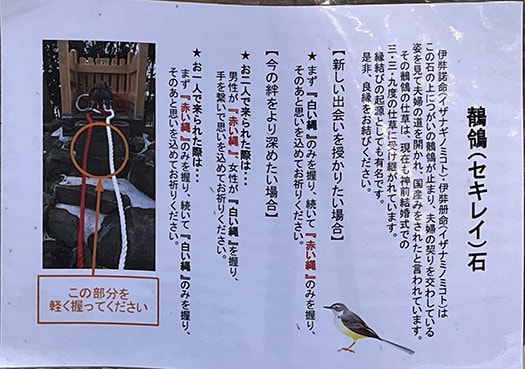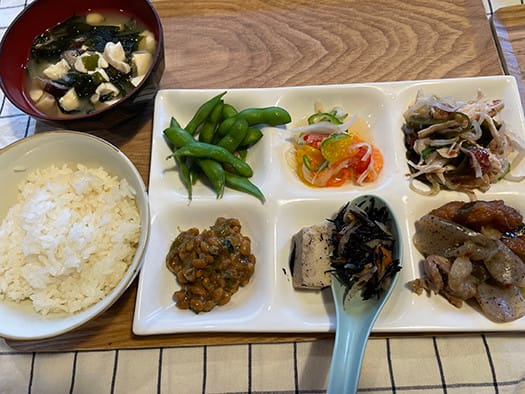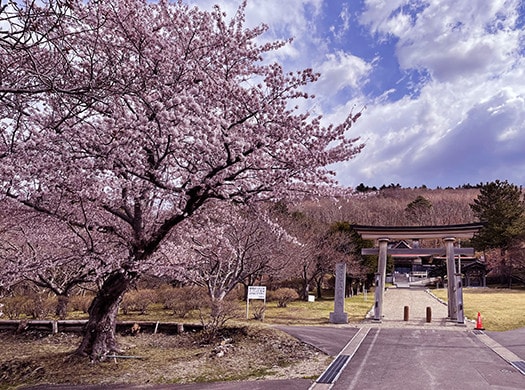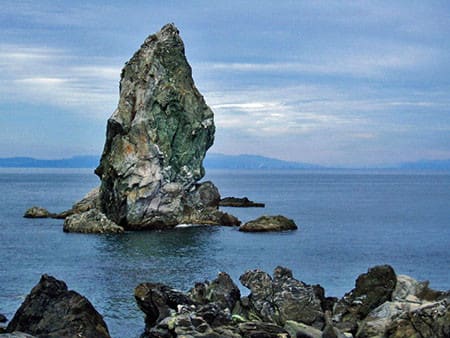


さて、このおのころ島神社は兵庫県南あわじ市榎列下幡多の丘陵上に位置しています。由緒書きには「当神社は古代の御原入江のなかにあってイザナギイザナミの国生みの聖地と伝えられる丘」にあるとされて現在地に存在するのだそうです。しかし
〜古事記・日本書紀の神代巻、いわゆる“記紀神話”によると天つ神がイザナギの命、イザナミの命の二神に神聖な沼矛(ぬぼこ)を授け、国造りを命じた。二神はまず天の浮橋に立ち、授かった矛で混沌とした世界をかき回した。潮をゴロゴロと鳴らし引き上げた矛の先から落ちた雫が固まって島となりました。これがオノコロ島。この島にイザナギ・イザナミの二神が降り立って、夫婦の契りを結び、御柱と宮殿を建て国土造成をされた。その舞台であるオノコロ島が「沼島」とされています。イザナギ・イザナミの二神が、周囲をまわり夫婦の契りを結んだ天の御柱が上立神岩だといわれる。〜
という他の説があって、そのほかにも比定地が淡路ではいくつか存在するといわれる。NHKブラタモリではタモリさんは、この沼島説に強い印象を抱いたと感想を語っていた。さらに
〜沼島は淡路島本島から4kmしか離れていませんが、日本中央構造線の大きな断層上にあり、本島とは全く異なる結晶片岩でできています。紀伊水道、大阪湾に面する沼島周辺は奇岩や岩礁があふれ豊かな自然景観を望むことができます。島の南西半分は黒色千枚岩層、北東半分は緑色片岩層、北部は緑泥片岩が分布しています。上立神岩は沼島の地質をよく表わしている奇岩で、30mの高さを誇り、島のシンボルとして人々に「立神さん」と呼ばれ親しまれています。<以上引用:奇岩百景プラス>〜
ことがらが天上界とこの世との境界部分の説話・神話なので凡人には確定のしようがない(笑)。しかし多くの列島の先人たちはこの列島の風土を探索・観察するうちにこの国土にはいくつかの「決定的な筋目」のような節理が存在することは見抜いていたことだろうと思います。中央構造線とか、太陽の日の出、日の入りに沿った国土の地理感覚が当時の「科学知識」の基礎になっていたことは自然に考えられる。
そういう科学的知識をわかりやすく人びとに衆知させるのに神話伝承というカタチを用いたというようにも解釈することが可能。そういった知恵が国生み神話には仮託されているように思える。先人たちの「大きな知恵」と淡々と語り合うことが素直な態度と言えるのではないだろうか。
English version⬇
Onokoro-jima Shrine Exploration-2: "Nushima" of Amanuma-phoko Mythology
The legend of "Numashima," where the drops of water that fell after being stirred up by the sacred Nuboko (bog spear) hardened. The depth of the wisdom of our ancestors that shows the symbolic point of the reason of the nature of the land. ・・・・・.
The Onokoroshima Shrine is located on a hill in Shimohata, Enokorozu, Minami-Awaji City, Hyogo Prefecture. According to the history of the shrine, it is located on "a hill said to be the sacred land of Izanagi-Izanami-no-Mikoto in the ancient Mihara Inlet. However
〜According to the mythology of the Kojiki and Nihonshoki, the so-called "Chronicle of the Chronicles of Japan," the gods of heaven gave the sacred Nuboko to Izanagi and Izanami and commanded them to create a new country. The two deities first stood on the floating bridge of heaven and stirred up the chaotic world with the spear they had been given. The drops that fell from the tip of the spear, which rumbled and pulled up the tide, hardened and became an island. This is the island of Onokoro. On this island, the two deities Izanagi and Izanami descended and, in conjugal union, built the sacred pillars and palaces and created the land. Onokoro Island, the setting of the ceremony, is said to be "Nushima. It is said that the heavenly pillar around which the two Izanagi-Izanami-Izanami deities made their conjugal bond was the Kamitachi-kami Rock. 〜The rock is said to be a pillar of heaven where the two gods Izanagi and Izanami made a circle around it and made a conjugal vow.
On NHK's Bratamori, Tamori expressed his impression that he was strongly impressed by this Nushima theory. Furthermore
〜˜Numa Island is only 4 km away from the main island of Awaji Island, but it is on a major fault line of the Japan Central Tectonic Line and is made of crystalline schist that is completely different from the main island. The area surrounding Nushima, which faces the Kii Channel and Osaka Bay, is full of oddly shaped rocks and reefs and offers a rich natural landscape. The southwestern half of the island is covered with black senbaite, the northeastern half with green schist, and the northern part with green mud schist. Kami Tachigami Iwa is an oddly shaped rock that well represents the geological features of Nushima. 30 meters high, it is affectionately called "Tachigami-san" by the people as the symbol of the island. <The above quote is from Kiiwa Hyakkei Plus: https://www.web-gis.jp/GS_Kigan100/K100-093/Kigan100_093pc.html
Since this is a myth and a legend about the boundary between the heavenly world and this world, it is impossible for ordinary people to be certain (laugh). However, I am sure that many of the archipelago's predecessors, through their exploration and observation of the archipelago's climate, would have seen that there were some "definite striations" in this land. It is natural to assume that the geographical sense of the land along the Median Tectonic Line and the sunrise and sunset of the sun was the basis of the "scientific knowledge" of the time.
It is possible to interpret this scientific knowledge in the form of myths and traditions as a way of making it easily understood by the people. Such wisdom seems to have been entrusted in the myth of the birth of the nation. It seems to me that it would be an honest attitude to talk with the "great wisdom" of our ancestors in an unaffected manner.












